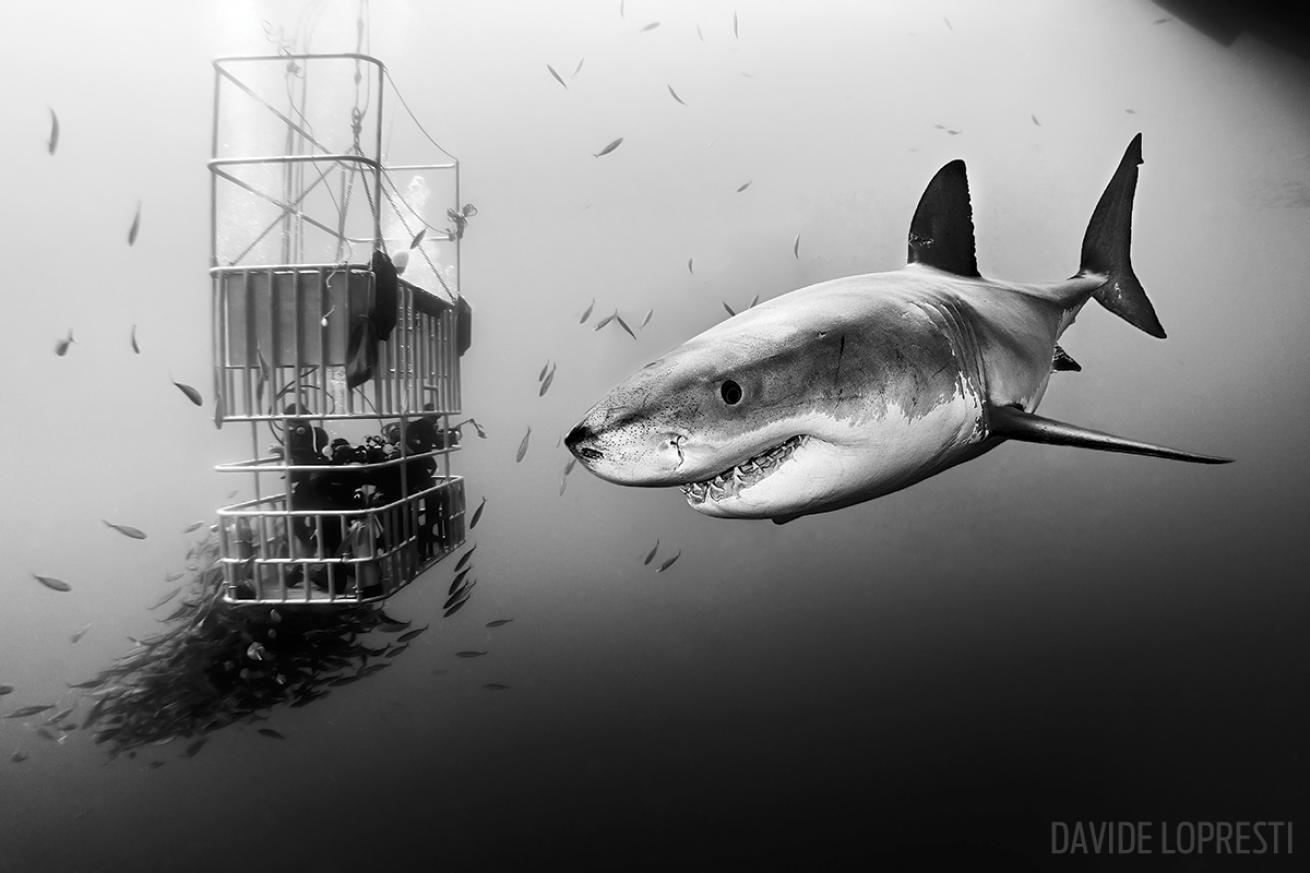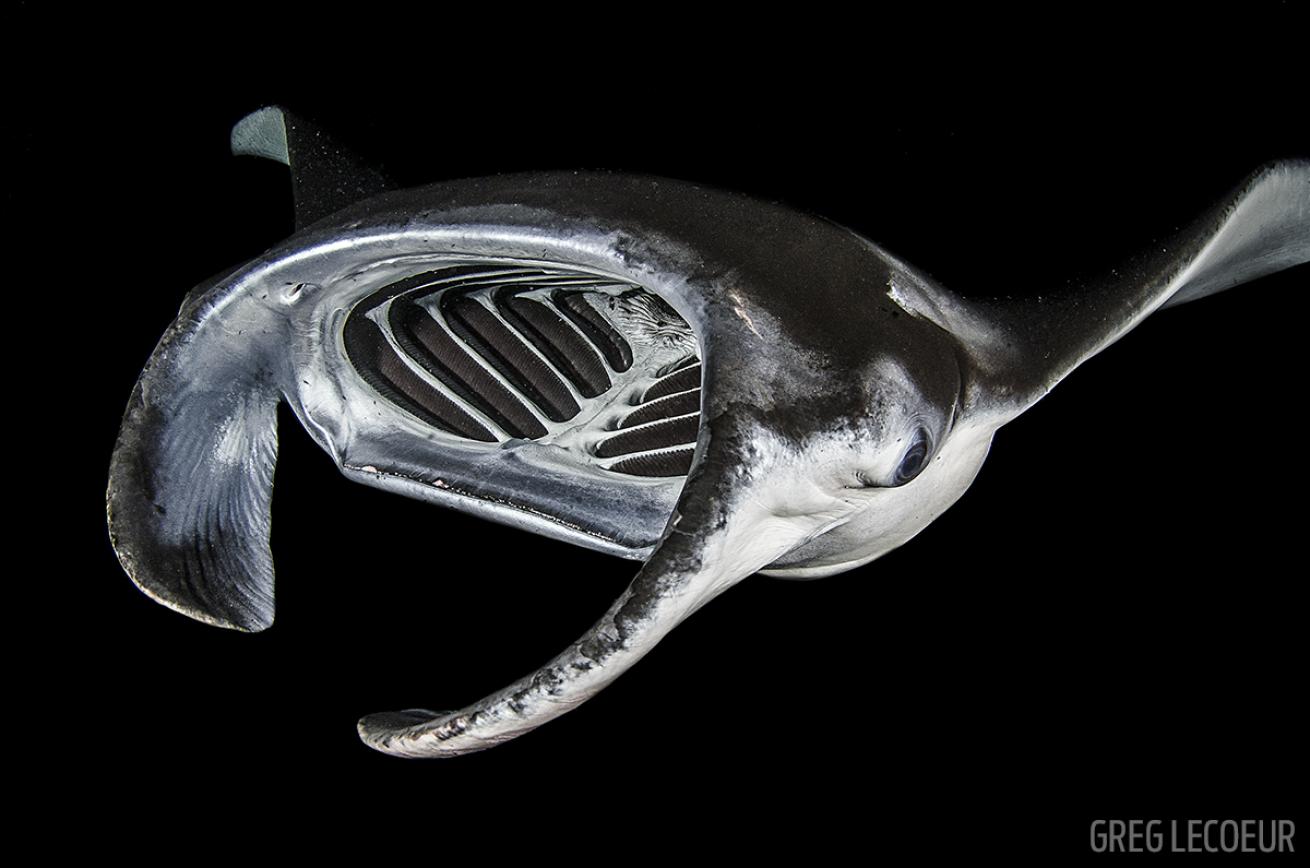6 Easy Places to Scuba Dive with Sharks, Mantas and Other Big Animals
Whether you're new to scuba diving or an experienced diver, sometimes you want to plan your bottom time at an easy — but awesome — location. So read on and see what it's like to cage dive with a great white shark in Isla Guadalupe, Mexico, or dive after dark with manta rays in Kona, Hawaii.
NEED MORE ADVENTURE? HERE ARE 11 ADVANCED BIG ANIMAL DIVES

Davide LoprestiCage diving experiences with great white sharks are offered from August through November in Isla Guadalupe, Mexico.
GREAT WHITE SHARKS | ISLA GUADALUPE, MEXICO
South Africa and Australia are among a handful of places in the world where you can reliably get in the water for a cage match with great white sharks. When it comes to water clarity and insane topside views, however, there’s no place like Isla Guadalupe. Save for a few scientists, this volcanic island about 150 miles off Baja’s west coast is as unpopulated as it is exotic. Clouds cascade waterfall-style down rust-red cliffs into an ocean the color of mouthwash, where the great whites lurk. Migratory animals, the sharks traverse these waters from August through November to feed on elephant seals and other pinnipeds. And this is when divers descend on liveaboards (the only way to dive here) to observe the animals up close from the relative comfort of aluminum cages. You’ll be breathing hookah air from the surface, so if you forget to breathe for a bit — and you might — no worries.
Dive Conditions: 70°F water temperature, 125 feet average visibility
Dive Now: Solmar V Liveaboard Cruise
CARIBBEAN REEF SHARKS | NEW PROVIDENCE, BAHAMAS
No place has sharks like the Bahamas. And for all the bull sharks, tiger sharks and hammerhead sharks that await in this enormous archipelago, accessible dives with graceful Caribbean reef sharks off Nassau deliver some of the headiest thrills. “Divers realize that these Caribbean reef sharks on our dives are not indiscriminate man-eaters but majestic, powerful animals to be respected,” says Michelle Cove, of trips with Stuart Cove’s Dive Bahamas. Most are in the 6-foot range, but you might spot a few up to 8 feet long as you kneel on the sandy bottom in the feeding arena and take in the frenzy.
Dive Conditions: 80°F water temperature, 80 feet average visibility
Dive Now: Stuart Cove’s Dive Bahamas
POTATO COD | GREAT BARRIER REEF, AUSTRALIA
Another enormous fish with puppy-dog tendencies is the potato cod, thought to be named for their dark, spudlike markings. But don’t let the oft-mellow demeanor of this fish — often seen lying in the sand or calmly cruising — fool you. On shark-feeding dives in Australia’s Coral Sea, potato cod are often seen zipping in and out of the action with immense power, scrapping for scraps. They’ve been known to appear out of nowhere, even popping up between a diver’s legs. “On night dives at Cod Hole, they love to cruise up out of the darkness and hang right near you and scare the bejeezus out of you,” says Janine Lucas of Mike Ball Dive Expeditions.
Dive Conditions: 80°F water temperature, 50-70 feet average visibility
Dive Now: Mike Ball Dive Expeditions
MANTA RAYS | KONA, HAWAII
Underwater lights placed in the sand near Garden Eel Cove set the stage for one of the world’s greatest night dives. Swarming plankton arrive first, and they are followed by huge manta rays that immediately start loop-the-loop feeding somersaults. “This is the only dive where the animals are performers and the divers are both the audience and the stage lighting,” says Byron Kay of Kona Honu Divers. “The mantas are like graceful alien ships dancing in an underwater rave.”
Watch our Manta Night Diving Video
Dive Conditions: 78°F water temperature, night dive
Dive Now: Kona Honu Divers

Greg LecoeurNight diving with manta rays in Kona, Hawaii, is one of the most incredible underwater experience scuba divers can have.
OCEANIC MANTAS | RAJA AMPAT, INDONESIA
The West Papuan archipelago of Raja Ampat has more than 1,500 islands, cays and shoals to lure divers, and sits smack in the triangle of biodiversity. Gill-raking practices prevail in many of the world’s oceans, but both reef mantas and oceanic mantas are protected in the waters around Raja Ampat, where they appear in large numbers. The largest of all rays, oceanic mantas can weigh as much as 2,900 pounds. But most of the ones you’ll see in Raja are smaller, with a wingspan of around 15 feet. “They’re as big as a blanket when they move over you, and with so much grace and elegance,” says Seth Setiada, a Jakarta-based diver.
Dive Conditions: 84°F water temperature, 80 feet average visibility
Dive Now: S/Y Indo Siren Liveaboard
MOLA MOLAS | BALI, INDONESIA
Because they spend much of their time lollygagging near the ocean’s surface, soaking up the sun’s heat, mola molas are often referred to as ocean sunfish. Known for their unusual body shape, they can grow up to 10 feet long and tip the scales at 5,000 pounds, making them the heaviest bony fish in the world. From July to October, the clear waters around Nusa Penida off Bali’s southeast coast are a magnet for mola molas. Settle in near the cleaning stations where they tend to gather. Nothing lowers your heart rate like watching a mola mola do its cool and casual thing.
Dive Conditions: 80°F water temperature, 65 feet average visibility
Dive Now: Arenui Luxury Liveaboard










